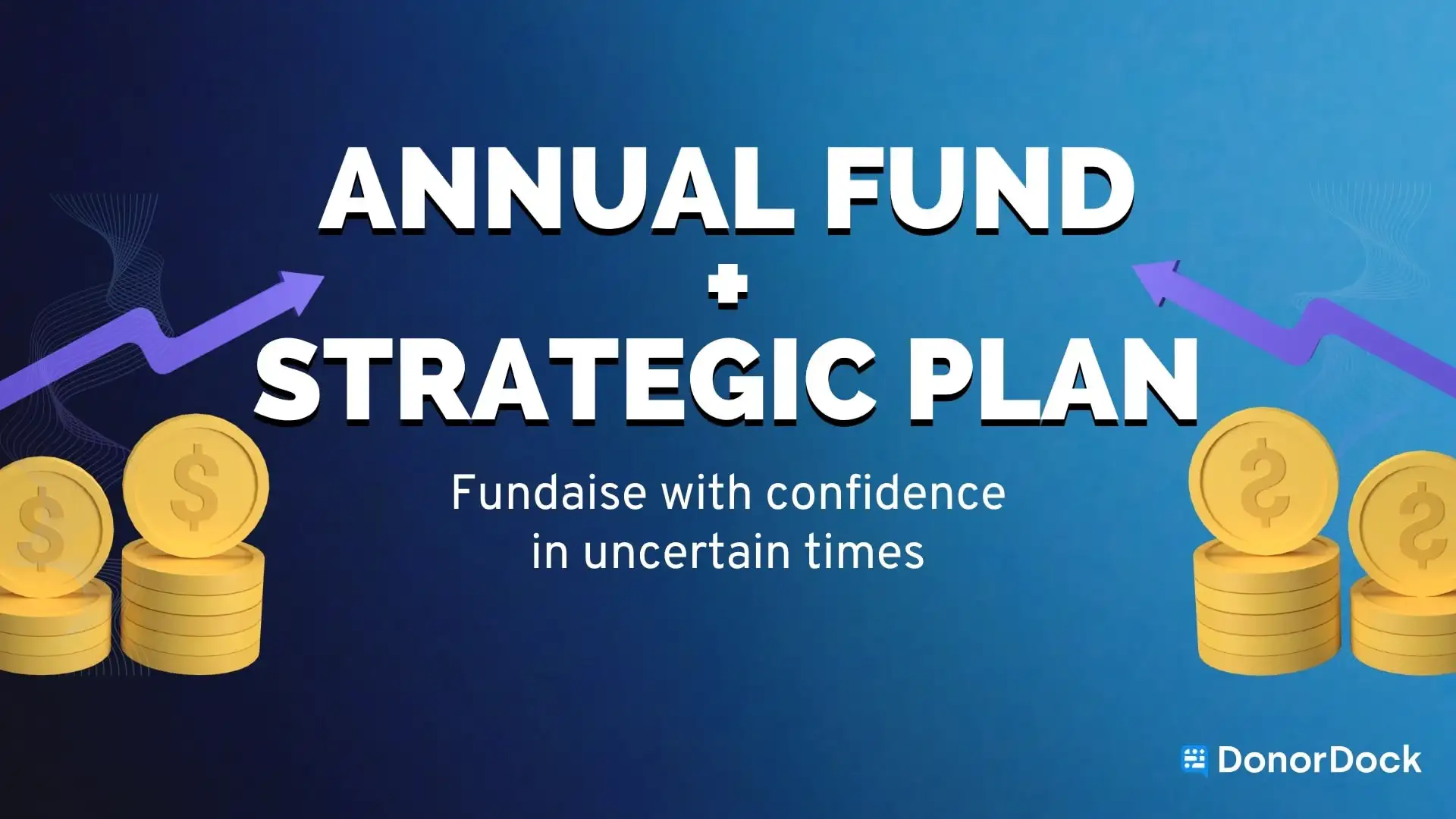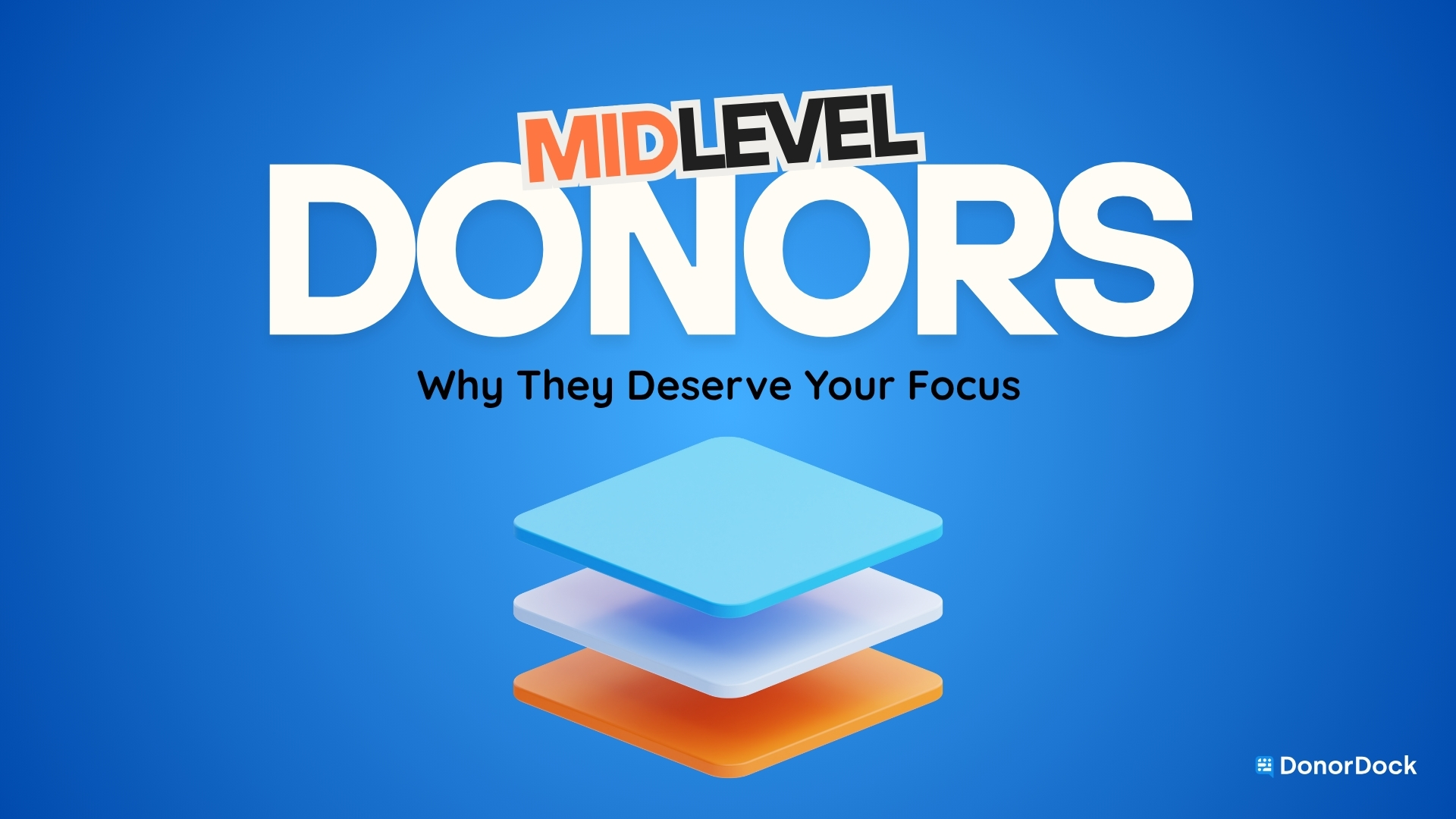Running a small nonprofit often feels like juggling flaming torches while riding a unicycle. There’s always another event idea, one more “quick” report, or a shiny new tool someone wants to try. The fastest way to bring calm and momentum back is to decide what you will not do right now.
That’s the power of an Omissions List. It’s a living, visible “not-right-now” playbook that protects your focus, eases your mental load, and helps your team work on what actually grows giving.
Why an Omissions List works
You don’t need 100 priorities. You need three that connect directly to goals that matter. An Omissions List creates that space.
- Retention is leverage. Donor retention fell to 42.9% in 2024, with new donor retention closer to 20%. Most teams lose more donors than they keep. A repeatable stewardship plan is far more powerful than chasing every new idea.
- Context switching slows you down. Every time someone jumps between tasks, progress stalls. For lean teams, that wasted energy is expensive.
- Clarity builds energy. When expectations are fuzzy, people say yes to everything. A shared Omissions List gives permission to focus on what matters most.
- Limits improve flow. In Kanban, work-in-progress limits force teams to finish before starting new work. Your Omissions List acts the same way for your calendar and roadmap.
Focus isn't about saying no to everything. It’s about agreeing, together, on what can wait so the best work gets done.
What belongs on your Omissions List
Think of the Omissions List as two buckets: Not Now and Not Anymore. Both protect focus. One is a parking lot, the other a stop sign.
Not Now examples
- New events that compete with top campaigns
- Extra social channels that spread you thin
- CRM fields or reports that add data without action
- Donor surprises that disrupt your stewardship rhythm
- Tech pilots before current tools are fully adopted
Not Anymore examples
- Legacy events with flat ROI
- Vanity metrics that do not drive decisions
- “Zombie” committees or meetings without an owner
- Communications that drifted from strategy
Quick tests to decide
- Does it support this quarter’s fundraising goals?
- Will it move dollars or deepen donor relationships in the next 90 days?
- Do we have the people to finish it, not just start it?
- Is it easy to reverse or a long-term commitment?
- Will it improve donor stewardship, not just acquisition?
If something fails the test, park it in Not Now. If it still fails next quarter, move it to Not Anymore.
Build it in 60 minutes
You can draft your first Omissions List in a single huddle with leadership, development, and communications staff.
- Set the purpose. Explain: “We’re creating an Omissions List to focus on what matters most. It will live in our CRM and get reviewed monthly.”
- Name your yeses. List 2 to 3 outcomes that define success this quarter. Example: “Increase donor retention to 55 percent,” “Book 10 major donor visits,” “Launch a new donor welcome series.”
- Dump everything. Write down every project, idea, and obligation. No debate yet.
- Sort. Place items into Do Now, Not Now, or Not Anymore. Use short phrases to reduce friction: “Love that idea. Not Now. We’ll review it December 1.”
- Assign owners and review dates. Every Not Now item needs a single owner and a date to re-evaluate. Every Not Anymore item gets an owner to unwind it.
Pro tip: Set limits. For example, no more than 2 campaigns per month or 1 new tool pilot per quarter. If something new must get added, something else moves to Not Now.
Make it stick
The Omissions List only works if it shows up where you work. Here are simple ways to keep it alive:
- Label it. Create a Not Now tag in your task or project board and track review dates inside the item.
- Add it to meetings. Make it a standing agenda item: Wins, Metrics, Blockers, Omissions List.
- Protect stewardship. Mark 3 to 5 essential donor touchpoints for the quarter and treat them as non-negotiable. Anything that competes with them goes on the list.
- Share it. Update your board, staff, and/or key volunteers each quarter with a quick note: “Here’s what we’re doing. Here’s what we’re not doing until March. Here’s why.”
Handling objections
“Our board chair wants a gala in next quarter.”
Thank them, acknowledge the intent, then place it: “That could be great. For now, it’s in Not Now. We’ll review March 1 with a budget and staffing plan.”
“What about unexpected opportunities?”
If it advances a current goal and fits within your limits, promote it. If not, capture it in Not Now with a review date.
“Won’t saying Not Now demotivate staff?”
The opposite. Boundaries create energy. People are more motivated when they know exactly what to do and what to ignore.
Starter template
Copy this quick template to draft your Omissions List:
Goals this quarter
- Lift repeat donor retention to 55%
- Book 10 major donor visits
- Launch 3-touch welcome series
Not Now
- New spring breakfast event. Review April 15. Owner: Taylor
- TikTok channel launch. Review May 1. Owner: Marcus
Not Anymore
- Monday all-staff meeting → replaced with weekly metrics check-in
- Quarterly 20-page board report → replaced with 1-page dashboard
Limits
- Max 2 campaigns at a time
- Max 3 automation builds
- Max 1 new tool pilot per quarter
Review cadence
- 10 minutes in weekly meeting
- 30-minute monthly review with board
Wrap-up
When you park the “good” to protect the “best,” fundraising gets lighter. Your team has clarity, donors feel seen, and you get your evenings back.
Start with a 60-minute huddle to draft your Omissions List. Then plug it into your CRM and weekly rhythm so it sticks. DonorDock was built for small and growing fundraisers who want donor-first focus. Schedule a demo and see how it can help you build stronger donor relationships.













